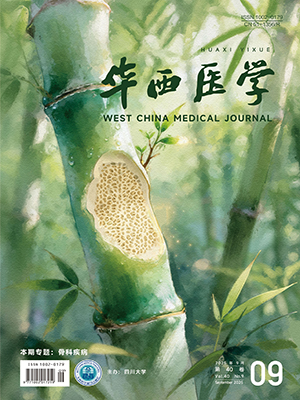Objective To develop a novel prediction model based on cerebrospinal fluid (CSF) lactate for early identification of high-risk central nervous system (CNS) infection patients in the emergency setting. Methods Patients diagnosed with CNS infections admitted to the Department of Emergency Medicine of West China Hospital, Sichuan University between January 1, 2020 and December 31, 2023 were retrospectively selected. Patients were classified into a survival group and a death group according to their 28-day survival status, and clinical characteristics were compared between groups. Univariate and multivariate logistic regression analyses were performed to identify independent predictors of 28-day mortality, which were subsequently used to construct a nomogram. Results A total of 173 patients were included, comprising 135 in the survival group and 38 in the death group. Multivariate analysis identified the Acute Physiology and Chronic Health Evaluation Ⅳ (APACHE Ⅳ) score [odds ratio (OR)=1.027, 95% confidence interval (CI) (1.002, 1.055), P=0.034], CSF lactate [OR=1.147, 95%CI (1.025, 1.286), P=0.018], and interleukin-6 [OR=1.002, 95%CI (1.001, 1.004), P=0.002] as independent predictors of 28-day mortality. The integrated model combining APACHE Ⅳ score, CSF lactate, and interleukin-6, demonstrated superior predictive performance compared with the APACHE Ⅳ score alone (P=0.020), and showed good calibration (Hosmer-Lemeshow P=0.50). Conclusions This tool may provide a useful instrument for emergency physicians to assess the 28-day mortality risk in patients with CNS infections, potentially facilitating early and targeted interventions for high-risk individuals. However, as the findings of this study are derived from a single-center retrospective dataset, the clinical applicability of this model requires further external validation through large-scale, prospective, multicenter studies to evaluate its generalizability.
Citation:
LAI Shichao, YAO Peng, ZHOU Yaxiong, XIE Xuxin, LIU Bofu, ZHENG Binbin, BAI Le, CAO Yu. Development of a short-term mortality risk prediction model for patients with central nervous system infection based on cerebrospinal fluid lactate. West China Medical Journal, 2025, 40(9): 1455-1461. doi: 10.7507/1002-0179.202508167
Copy
Copyright © the editorial department of West China Medical Journal of West China Medical Publisher. All rights reserved
| 1. |
|
| 2. |
World Health Organization. WHO guidelines on meningitis diagnosis, treatment and care. Geneva: World Health Organization, 2025.
|
| 3. |
|
| 4. |
National Institute for Health and Care Excellence. Meningitis (bacterial) and meningococcal disease: recognition, diagnosis and management. London: National Institute for Health and Care Excellence (NICE), 2024.
|
| 5. |
|
| 6. |
|
| 7. |
|
| 8. |
|
| 9. |
|
| 10. |
|
| 11. |
|
| 12. |
|
| 13. |
|
| 14. |
|
| 15. |
|
| 16. |
|
| 17. |
|
| 18. |
|
| 19. |
|
| 20. |
|
| 21. |
|
| 22. |
|
| 23. |
|
| 24. |
|
| 25. |
|
| 26. |
|
| 27. |
|
| 28. |
|
| 29. |
|
| 30. |
|
- 1.
- 2. World Health Organization. WHO guidelines on meningitis diagnosis, treatment and care. Geneva: World Health Organization, 2025.
- 3.
- 4. National Institute for Health and Care Excellence. Meningitis (bacterial) and meningococcal disease: recognition, diagnosis and management. London: National Institute for Health and Care Excellence (NICE), 2024.
- 5.
- 6.
- 7.
- 8.
- 9.
- 10.
- 11.
- 12.
- 13.
- 14.
- 15.
- 16.
- 17.
- 18.
- 19.
- 20.
- 21.
- 22.
- 23.
- 24.
- 25.
- 26.
- 27.
- 28.
- 29.
- 30.




